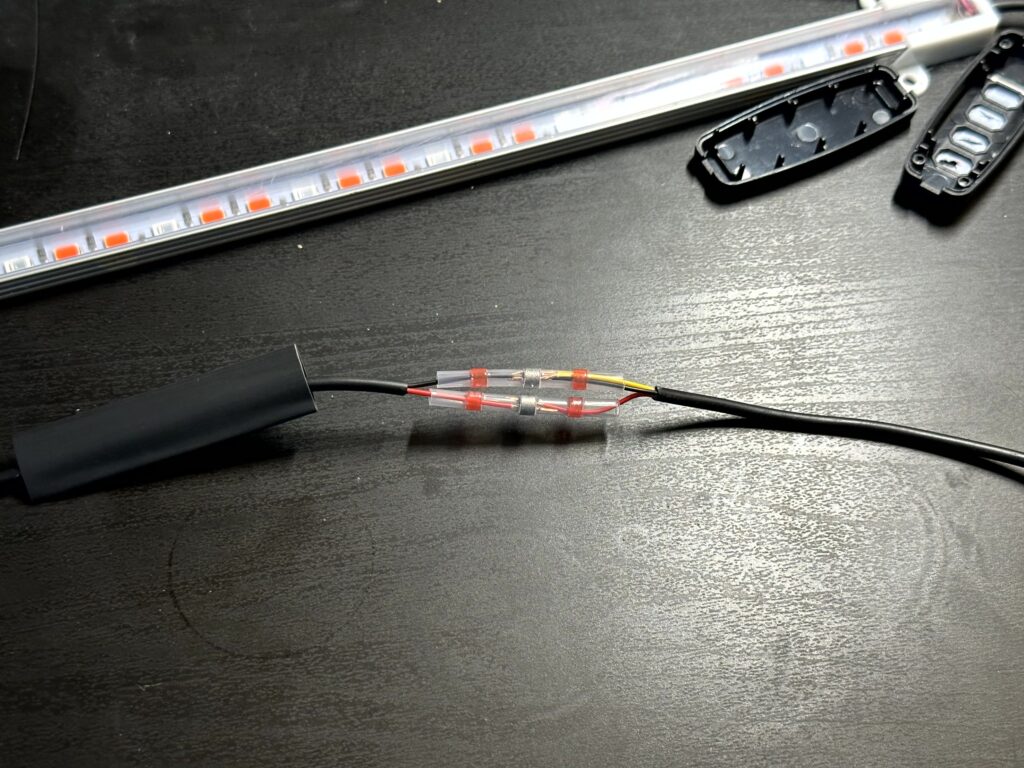
Growing plants indoors is fun. You have greater control over the temperature, humidity, pests, light, etc. Internet shopping sites are abuzz with low cost, USB powered LED grow lights. I’ve tried out several variants with different color options and styles, but one commonality among the majority of them is this flimsy-feeling inline timing controller module. The controllers provide a small selection of options for dimming, color if applicable, and a basic 3/9/12 hour on-and-off timer.
Unfortunately these controllers place some pretty big limitations on what can be otherwise decent grow lights. For example, if the power is lost, the settings and timer reset to defaults, and even more annoyingly, I believe some variants of these grow lights may not power on automatically when receiving power – rather requiring the user to press a button on the controller. I wish I could just plug these into a simple Wi-Fi smart plug and control them with Home Assistant or Amazon Alexa, but alas, that wouldn’t work effectively.
So I propose two possible solutions to overcome the limitations of these controllers. The first would be to replace the cheap controller with something like an ESP8266 and firmware such as WLED to enable highly customizable control functionality. This should be totally possible, but I’ve actually settled on an even simpler second option: simply eliminating the inline controller altogether.


The flimsy controller can be easily cracked open with a small flat head screwdriver, and once inside it’s pretty easy to figure out which wire is which. Each variety of these lights might be a tiny bit different but they’re overall the same concept. On the lower edge of the PCB there’s red and black wires from the 5v USB connector, and on the other side – in the case of my 2-color grow lights pictured at the top of the post – one positive (VCC) wire and two negative wires, one for the red diodes and one for the blue.

With the controllers secrets spilled, I simply cut the whole controller out of the cable. I used some of the quick and super cheap self-sealing-solder connectors I’d purchased for projects such as this to connect the red VCC wire to the red LED wire, and the black negative wire to the black and yellow LED wires. This will make it such that both the red and blue LEDs are constantly delivered full power. To help preserve the unobtrusive appearance of the black power cable I put some (slightly too large – oops) heat shrink tube over the two solder connectors.

Of course a modification like this means I can no longer control the brightness or color setting – it’s just on or off. I did not find these customizations to be very useful, and found that I only ever used the maximum brightness option for most of our plants anyway.
With the controller gone and the light now “dumb,” a simple and cheap smart plug before the USB power adapter can easily turn the light on and off, and I’m free to automate using any platform I’d like. One of the driving forces for wanting to make this modification in the first place was actually as part of a project to set up some cameras to timelapse plant growth, which I plan to detail in a future post.
TLDR: Cheap grow lights can be reliably automated using smart plugs if you remove the flimsy controller altogether.
If you find my website helpful please consider donating using the link below. After overcoming countless challenges myself thanks to the help of other individual technology writers, I have chosen to create this blog/site to share knowledge with people whom it could help.
Leave a Reply